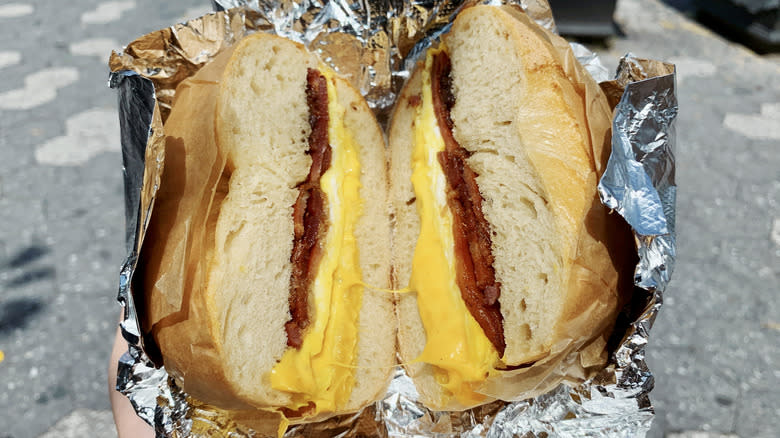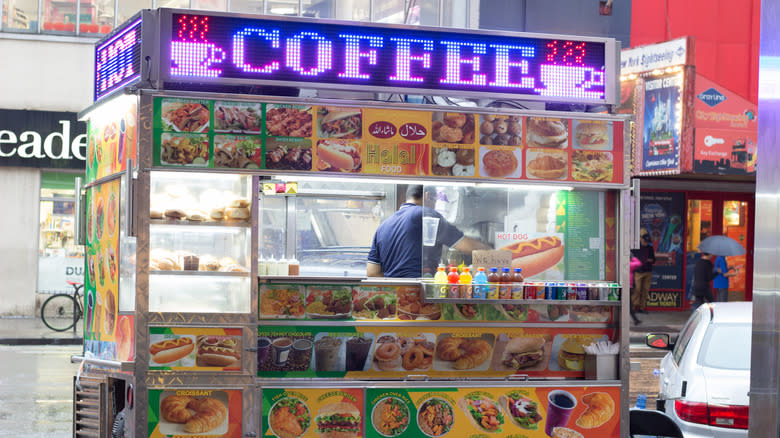The History Of New York's Iconic Bacon, Egg, And Cheese Breakfast Sandwiches

Visiting New York lets you catch a glimpse of the city's glamorous and energetic pulse, but living in New York exposes you to its inner workings. Aside from comfortably chic shoes and a portable charger, the secret is breakfast. The city has its stereotypical foods — bagels, pizza, pastrami — and then there are the more quietly celebrated delicacies like street meat, chopped cheeses, and egg sandwiches on a roll.
Bacon, egg, and cheese sandwiches may not be exclusive to New York, but city dwellers have their own distinct way of approaching the morning regimen. If we're talking about iconic NYC bacon, egg, and cheeses, we're talking about bodega sandwiches. There are no frills, no infused aiolis, and absolutely no garnishes. Everything is cooked on a flattop in minutes to create the most satisfying, ooey, gooey, cheesy masterpiece. It's not so much the sandwich itself that defines New York, but how it's ordered, made, and consumed. It's to be requested in one breath, evolving into a new word "baconeggandcheese" and then devoured on the go.
With the rather simple ingredients, it's no surprise that the evolution of the breakfast sandwich wasn't linear. As with many old favorites, people around the globe had the same idea, but no one does it like New York. Tastiness aside, the iconic breakfast sandwich was popularized in NYC for its low cost and record cooking time.
Read more: The 20 Best Olive Oils For Cooking
New York's Favorite On-The-Go Sandwich

Before New Yorkers picked up on the efficiency and deliciousness of bacon, egg, and cheese sandwiches, British street vendors were all over it during the Industrial Revolution. Noticing the rush of workers storming the streets in the early hours, vendors set out to supply egg sandwiches as quickly as possible. Britans named these "bap" sandwiches after the soft roll that would hold the sandwich together, much like NYC's classic bulkie roll. These tasty sandwiches ultimately became transatlantic, but an exact timeframe is tough to pinpoint. Some historians credit pioneers on the overland trail for introducing quick breakfast to America with the Denver omelet, while others attribute the country's first egg sandwich to Chinese chefs at logging camps craving Egg Foo Yung. McDonald's may have helped push the idea of grab-and-go breakfast sandwiches with its famed Egg McMuffin in 1972, but New Yorkers were already catching on.
What started as a strictly cheap and fast way to fill up transformed into a cherished NYC ritual. Being handed that toasty tin foil-wrapped roll is like a warm hug from your closest confidant — the bodega's sandwich artist. New York's classic egg sandwiches can be found at just about any corner, in any borough, at any given time, and it has been that way for generations. The speedy sandwich quietly gained recognition over time, lauded for its delicious simplicity. Decades later the purpose remains; a cheap, filling meal that feels like home and fits in one hand.
Read the original article on Tasting Table

